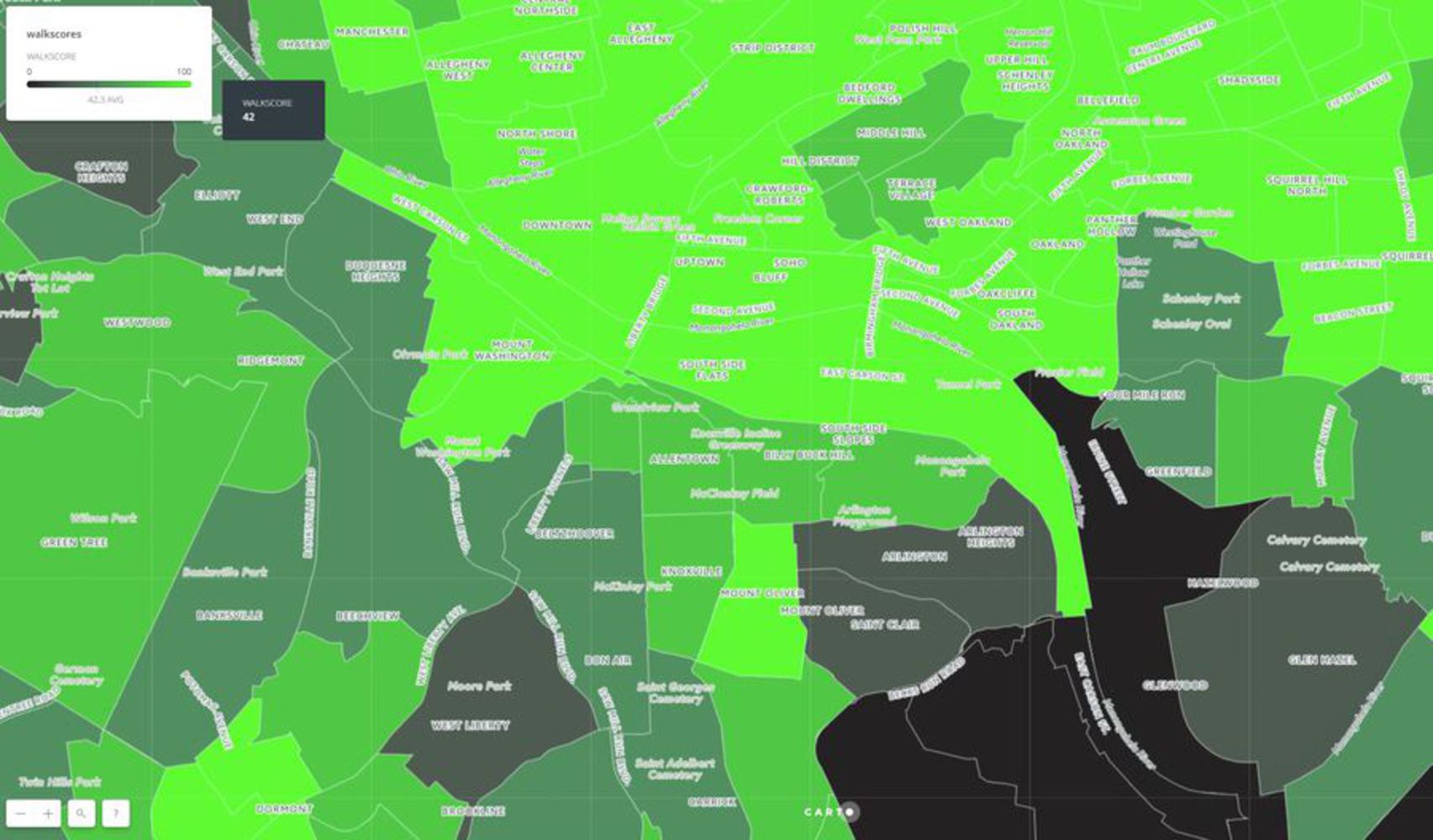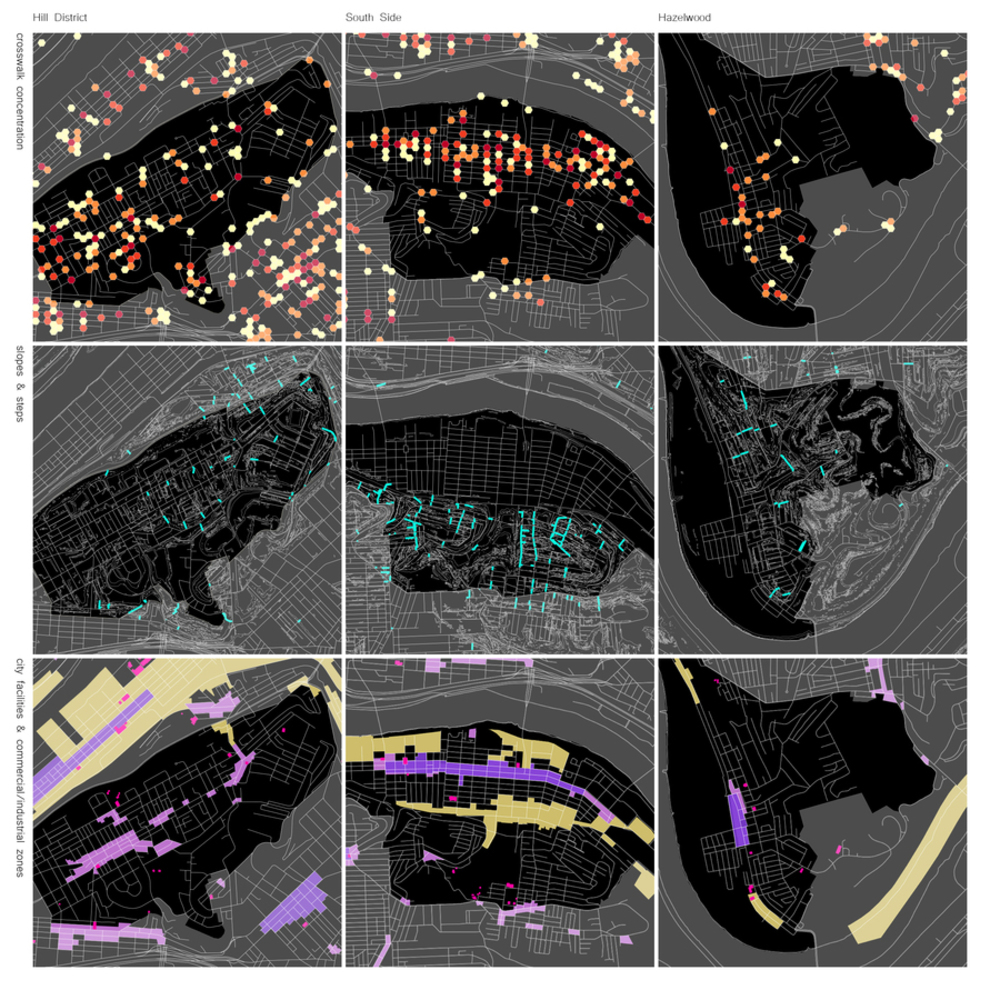Intention
After looking at the potential of the Walk Score measures, the idea is exploring and understand the value of different dataset in depth to produce objectives outcomes for a purpose. In the case of these project, the goal is to peel out the reasons why three neighborhoods of Pittsburgh have different walk scores.
Then, crossing three of the datasets from WPRC, grid tries to compare different places with same metrics and conclude if the company's result does show a valid graphic and if we can learn from a self-made datasource mapping process. The datasets are: crosswalks concentration, slopes and steps, and city facilities & commercial/industrial zones, the result. Each one has the ability to learn how people in these behave depending if the sidewalks and streets are easy to navigate, if the topography plays a big role and if you can take a path to go from point A to B, and finally, if the concentration of jobs and commercial activities, plus city facilities like schools and medical centers, enables people to prefer to walk instated of taking public transit or cars.
The chosen neighborhoods are Hill District, South Side, and Hazelwood. The Walk Score of these neighbor is 60, 85 and 18 respectively (see graphic). So the question is why different places in the city have different values and if we can use open source data to discover these question.Note: the interactive map is available at the following link, https://wprdc.carto.com/builder/d34f1c10-efba-11e6-853f-0e233c30368f/embed

